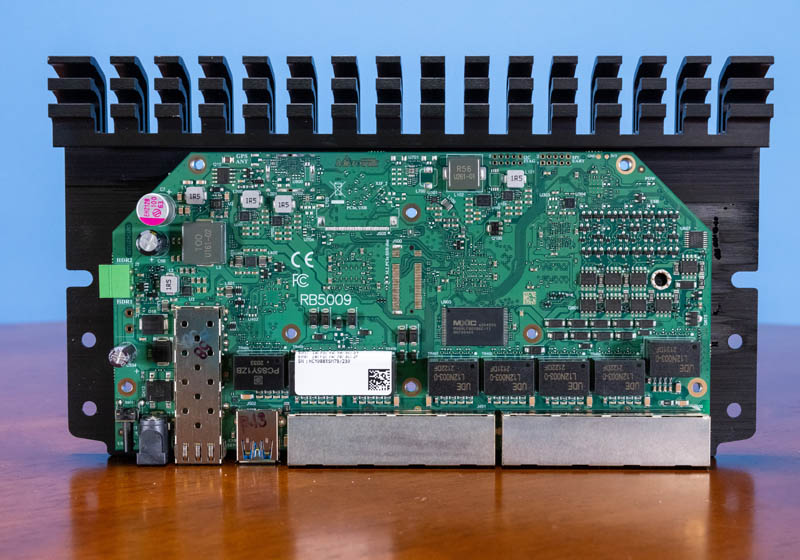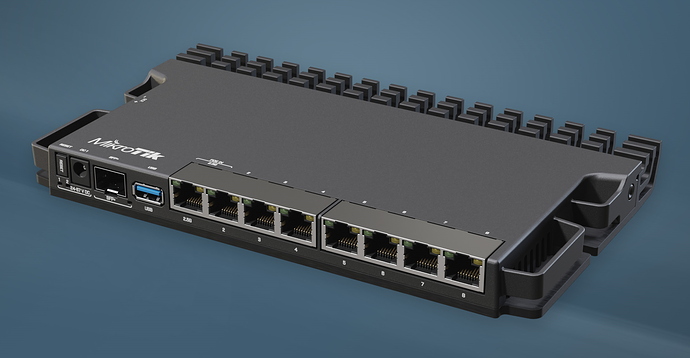Would it be possible to have a Rock 5 variant built partially “upside down” on top of a heat sink?
Inspiration
Recently I bought a new router as part of upgrading my home network. The unit chosen is a Mikrotik RB5009 (the one without PoE out). The interesting part isn’t the performance or the size of the unit but rather how the router is constructed. The PCB is mounted to a large aluminium heat sink that also is the bottom of the case. The SoC and network chip are mounted on the underside of the PCB connected with thermal pads to the heat sink. A plastic top then covers the rest. The unit is so small that it is possible to have four of them in a 1U rack space, and still needs no fans at all.
Idea
My main computer since about a year back is a Rock 5B and it has served me well. Recently, I bought a second one because the household simply needed a backup computer. …so I know what the 5-series can do by now. In time I hope to add a third unit that will take on the server duties (storage, web, etc.).That third unit would be located by the router for obvious reasons. It will also need to be quiet.
The first thought was to contact Mikrotik to suggest they make a mini server in the RB5009 form factor, which I did, but then I thought of presenting the idea here too.
The idea is to have Rock 5-series hardware built with the SoC and memory on the underside of the PCB, attached with thermal pads to a heat sink that also is the bottom of the case. The GPIO and m.2 would be on top, accessible by removing the top cover. All sockets (HDMI, USB, µSD, etc.) would have to be on one edge of the unit.
Size
A suggestion is to have the unit sized for usage with something like the RB5009 series 1U brackets.That would allow the unit to be rack-mounted among routers and switches. Even without mixing with Mikrotik units there would be room for four servers in one 1U space. The size would allow for some extra volume to tinker with, like adding internal add-on boards. …or maybe front-loaded SSDs? The unit could be built so thin that the top of the Ethernet ports are cut out from the rest of the plastic cover.
Dream
As the idea is a combination of stuff from two companies, the logical dream scenario is a collaboration between the two – Radxa × Mikrotik.
Thank You for taking time.

